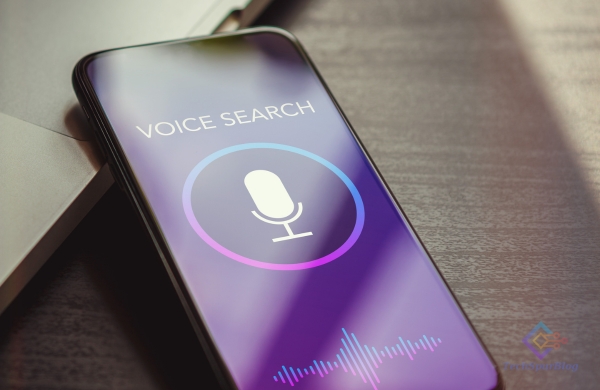
Speech recognition has evolved as a transformative technology in recent years, bridging the gap between human speech’s natural flow and the digital understanding of machines. What was once a science fiction concept has now become an integral part of our everyday existence, breathing life into virtual assistants, enabling the intuitive control of devices through voice, and even revolutionizing how medical transcriptions are conducted.
For Tech enthusiasts keen on engaging in simple AI projects with source code, this blog post invites you to join us to look into the captivating world of speech recognition, guiding you through constructing a simplified yet functional speech recognition system.
You will learn about the fundamental principles underpinning this remarkable technology, exploring the intricate processes of capturing and processing sound waves, extracting meaningful linguistic features, and employing sophisticated machine learning algorithms to decipher spoken words.
What is Speech Recognition?
Speech recognition, also known as automatic speech recognition (ASR), is a revolutionary technology that enables machines to understand and interpret spoken language. This process involves capturing spoken words through audio input, preprocessing to enhance quality, extracting key features, and utilizing acoustic and language models for interpretation.
The final step, decoding, generates the most probable transcription of spoken words. Widely used in applications like virtual assistants and transcription services, speech recognition advances, enhancing human-computer interaction and accessibility.
Also Read: Break the Mold: Unleash Your Creativity with Voice Changer Tools
Building a Simple Speech Recognition System
Overview of the System Architecture
Central to every speech recognition system is a carefully structured architecture, a framework that facilitates the smooth conversion of spoken words into understandable text. This architecture usually consists of five fundamental components:
Speech Capture: This step allows the acoustic signal of the spoken utterance to be captured using a microphone or another audio input device.
Feature Extraction: The captured audio signal is then subjected to feature extraction, which transforms the raw sound waves into meaningful verbal representations. Mel-frequency cepstral coefficients (MFCCs) are a common choice for feature extraction in speech recognition.
Acoustic Modeling: Acoustic modeling connects the extracted features with the language structure. This model estimates how likely a specific sequence of acoustic features matches a particular word or phrase.
Language Modeling: Language modeling captures the statistical relationships between words in a language. Given the acoustic model’s output, this probabilistic model predicts the most probable sequence of terms.
Speech Recognition Engine: The final component includes the speech recognition engine, which harnesses the power of acoustic and language models to decipher the spoken utterance. It employs a decoding algorithm to determine the most probable word or phrase sequence that matches the acoustic features and language constraints.
Data Collection and Preprocessing
The accuracy and strength of speech recognition models depend a lot on the quality of the data used for training and testing. Good-quality data must include the natural differences in how people speak so the system can handle different accents, speaking methods, and environments.
Data collection methods include recording speech from various sources, downloading existing speech datasets, and synthesizing speech using text-to-speech technologies. Once collected, the speech data undergoes preprocessing to enhance its quality and consistency. This may involve noise reduction, silence removal, and normalization techniques to eliminate background noise, remove pauses, and adjust volume levels.
Also Read: ChatGPT Evolves: Now with Voice and Vision Capabilities
Feature Extraction
Feature extraction forms an essential speech recognition element, transforming the raw acoustic signal into meaningful linguistic representations. These features capture the essential characteristics of spoken words, like pitch, formants, and energy distribution, which can be analyzed and modeled effectively.
MFCCs are an established feature extraction technique that involves breaking the audio signal into frequency bands, calculating the energy distribution within each round, and applying a logarithmic transformation. The resulting MFCCs provide a compact yet informative representation of the acoustic signal, suitable for subsequent processing stages.
Model Training
Machine learning is central to speech recognition, enabling the system to learn from data and predict unseen speech expressions. The training involves feeding the system with an extensive collection of labeled speech data, where each utterance is accompanied by its corresponding text transcription.
The acoustic model helps map acoustic features to words or phrases and is trained using Hidden Markov Modeling (HMM). HMMs are statistical models that capture the sequential nature of speech, allowing the model to learn the probabilistic relationship between acoustic features and linguistic units.
Similarly, the language model, which predicts the most probable sequence of words given an acoustic input, has been trained using a statistical language modeling approach. This approach includes analyzing an extensive text data collection to learn the statistical probabilities of word transitions.
Model Evaluation
Examining the effectiveness of a speech recognition system is essential to guarantee accuracy and applicability. A commonly used metric for this purpose is the Word Error Rate (WER), which measures the proportion of incorrectly recognized words in a given test set. Lower WER values indicate better performance.
Other evaluation metrics include character error rate (CER), which measures the proportion of incorrectly recognized characters, and sentence error rate (SER), which measures the number of sentences with one or more errors.
Also Read: AI Renaissance: How Artificial Intelligence is Reshaping Our World
Conclusion
As we explored, we gained insight into speech recognition, from its fundamental principles to constructing a simplified system. We learned the important role of data, feature extraction, model training, and evaluation.
Remember, the future of speech recognition is bright, creating a new way to interact with machines and enhancing our daily lives. As you progress with this incredible technology, remember that platforms like kandi stand at the forefront of innovation, providing cutting-edge toolkits and solutions that empower developers to craft groundbreaking voice-enabled applications.
With kandi’s toolkits and open source knowledge assets, enter a world where your voice can make things happen. Start and shape the world around you with the simplicity of your voice.

Leave a Reply